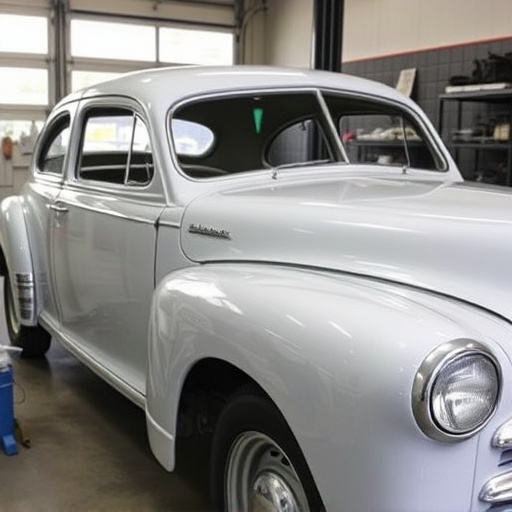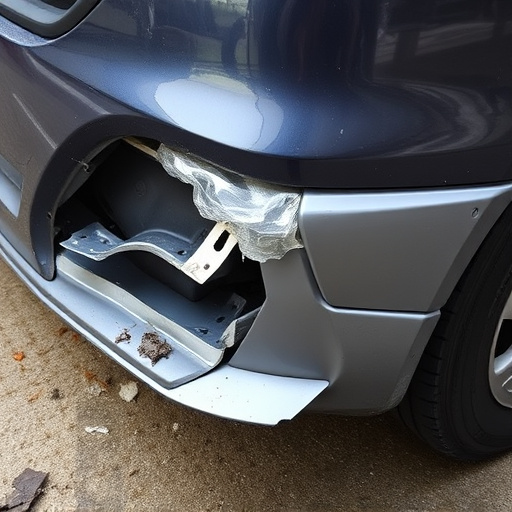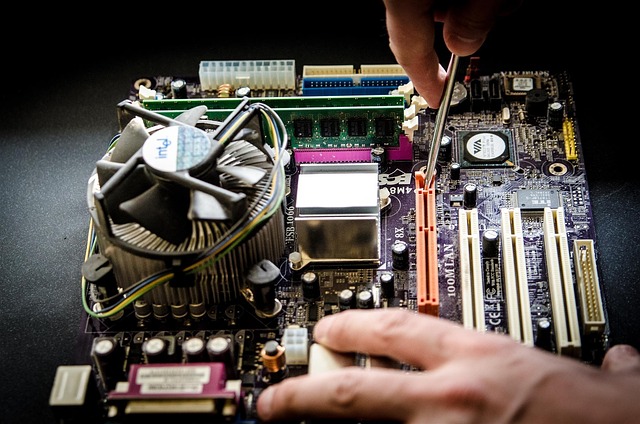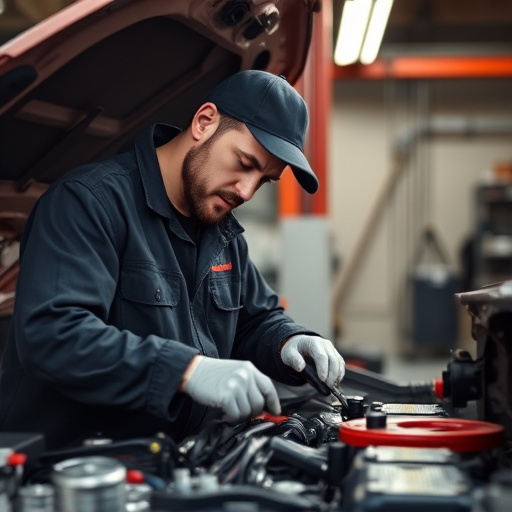Tesla major structural repair is a specialized process addressing severe frame and body panel damage after accidents. Professional technicians use advanced techniques like precise cutting and welding, along with Energy Transfer Path Reconstitution, to realign metal components and restore the vehicle's structural soundness and roadworthiness. Rigorous post-repair testing ensures optimal performance and safety, while meticulous body shop work aligns the restored vehicle with Tesla's stringent safety requirements and aesthetic standards.
Tesla vehicles, renowned for their cutting-edge technology, require meticulous care during major structural repairs. This article delves into the intricacies of the process, focusing on two key aspects: understanding the fundamentals of Tesla major structural repair and exploring the critical step of energy transfer path reconstitution. By examining these elements, we uncover how to restore performance and safety, ensuring a seamless transition back onto the road for these innovative electric vehicles.
- Understanding Tesla Major Structural Repair: The Basics
- Energy Transfer Path Reconstitution: A Crucial Step in Repair Process
- Restoring Performance and Safety: Post-Repair Testing and Considerations
Understanding Tesla Major Structural Repair: The Basics

Tesla major structural repair is a specialized process that involves correcting significant damage to a vehicle’s frame and body panels. This type of repair is often necessary after severe car collisions or accidents, where the structural integrity of the vehicle can be compromised. It goes beyond mere cosmetic fixes; it ensures the safety and stability of the vehicle during future driving.
In the event of a car collision repair, especially in cases of vehicle collision repair or even minor car dent repair, professional technicians employ advanced techniques and tools to realign and reforge the metal components. This involves careful assessment, precision cutting, and precise welding to restore the original shape and strength of the affected areas. The ultimate goal is to bring the vehicle back to its pre-accident condition, making it safe for roads while preserving its structural soundness.
Energy Transfer Path Reconstitution: A Crucial Step in Repair Process

In the intricate process of Tesla major structural repair, Energy Transfer Path Reconstitution stands as a pivotal step that seamlessly weaves together the art and science of vehicle restoration. This crucial phase involves meticulously reestablishing the efficient flow of energy within the vehicle’s framework, ensuring its optimal performance post-repair. By addressing the energy transfer paths, experts in body shop services can achieve seamless integration between restored components and original parts, enhancing both safety and functionality.
Through this meticulous process, auto maintenance professionals overcome the challenges inherent in vehicle restoration, particularly when dealing with complex structures. They employ advanced techniques to reassess and reconstitute energy pathways, thereby guaranteeing that the Tesla not only looks as good as new but also operates at peak efficiency. This holistic approach to Tesla major structural repair goes beyond mere cosmetic enhancements; it ensures a robust and reliable driving experience for years to come, making it an indispensable aspect of any comprehensive vehicle restoration strategy.
Restoring Performance and Safety: Post-Repair Testing and Considerations

After a Tesla major structural repair, the next critical step is to ensure that the vehicle’s performance and safety are restored to optimal levels. This involves rigorous post-repair testing to verify the integrity of the fixed components and assess the overall structural soundness of the vehicle. During these tests, various systems including brakes, steering, suspension, and lighting are checked to guarantee they function correctly and meet Tesla’s stringent safety standards. Additionally, a thorough road test is conducted to evaluate handling, acceleration, and braking performance, ensuring the car drives as smoothly and securely as new.
Proper restoration also encompasses meticulous auto body restoration and vehicle paint repair techniques. Skilled technicians use advanced methods for fender repair, ensuring seamless integration of replacement parts with the existing body. The process involves precise measurements, careful body panel alignment, and expert paint matching to deliver an unnoticeable finish that matches Tesla’s original aesthetic standards. By combining these meticulous repairs with sophisticated energy transfer path reconstitution, owners can expect their Teslas to not only look like new but also handle as such on the road.
In concluding, Tesla major structural repair involves a meticulous process of not only fixing physical damage but also reconstituting energy transfer paths. This two-pronged approach ensures that not only is the vehicle’s structure intact, but its performance and safety are also restored to optimal levels. By understanding the basics of structural repair and the crucial role of energy transfer path reconstitution, Tesla owners can ensure their vehicles return to top form after any significant damage.














